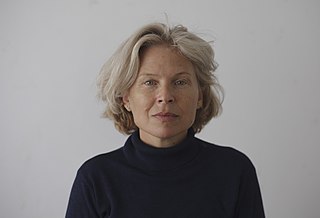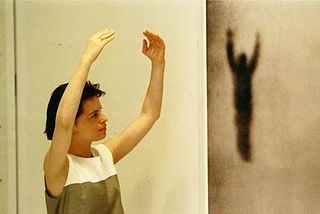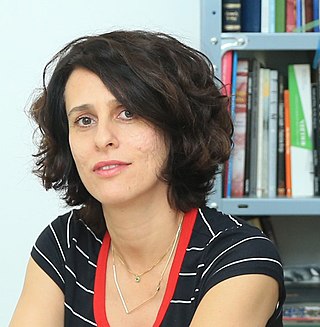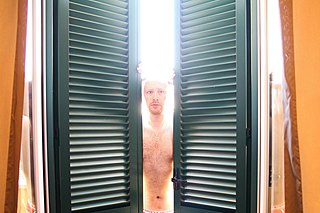Artists Anonymous are an art group based in Berlin and London. They were founded in 2001 during their studies at Berlin University of the Arts (UdK) at the classes of Georg Baselitz and Stan Douglas. They finished studying in 2006.

Sigalit Landau is an Israeli sculptor, video and installation artist.

Michal Rovner, also known as Michal Rovner Hammer, is an Israeli contemporary artist, she is known for her video, photo, and cinema artwork. Rovner is internationally known with exhibitions at major museums, including the Louvre (2011) and the Whitney Museum of American Art (2002).
Sophia Wallace is an American conceptual artist and photographer. She is best known for her project "CLITERACY," which addresses citizenship and body sovereignty through the medium of text-based objects, unauthorized street installation, performance and sculptural forms.
Tal Shochat is an Israeli photographer.

Maya Zack is an artist-filmmaker who creates video art and installations.

Nino (Chananya) Herman is an Israeli art-photographer.

Michael Sgan-Cohen was an Israeli artist, art historian, curator and critic. His oeuvre touches different realms of the Israeli experience and the Hebrew language, displaying a strong connection to the Jewish Scriptures. His works were nurtured by his extensive knowledge of Art history, philosophy, Biblical Texts, Jewish thought and Mysticism, which in turn illuminated all these pursuits. His engagement with Judaism and the Bible as a secular scholar and his vast knowledge of modern and contemporary art contributed to the development of a distinctive approach which combined Jewish and Israeli symbols and images to create a multilayered and contemporary artistic language.

Gastón Zvi Ickowicz is an Israeli visual artist living and working in Tel Aviv.
Michael Druks was an Israeli-born British artist.
Catinca Tabacaru Gallery is a contemporary art gallery in New York City opened in May 2014. Catinca Tabacaru Gallery, Harare, the Gallery's second location was founded in August 2017 in partnership with Dzimbanhete Arts Interactions.
Central Gallery is a public, not-for-profit art gallery and exhibition space in Tel Aviv, Israel, located in Tel Aviv Central Bus Station
The CTG Collective is a not-for-profit art organization.

The Peace Kids is a mural depicting Srulik, a symbol of Israel, in embrace with Handala, a symbol of Palestine. It was created by Israeli artist John Kiss in dual locations: Bethlehem, Palestine and Tel Aviv, Israel.

Igor Zeiger, is an Uzbekistan-born Israeli Italian artist and curator.

Karam Natour is a visual artist. Natour’s practice employs a variety of mediums, including video, digital drawing, and installation, although he considers video his ‘mother tongue’
Michal Chelbin is an Israeli photographer. Her work is held in the collections of the Tel Aviv Museum of Art, Israel; Metropolitan Museum, New York; LACMA; Getty Center, LA; and the Jewish Museum, New York.

Street art in Israel refers to different forms of visual art found on public walls, buildings, and other surfaces throughout the State of Israel. Israeli street art reflects the country's unique cultural, historical, and political landscape.
Yekutieli is a Hebrew surname. Notable people with the surname include:

Brothers of Light is a contemporary street artist duo from Jerusalem, known for their international large-scale vivid art works using unique sets of old and modern symbols.















